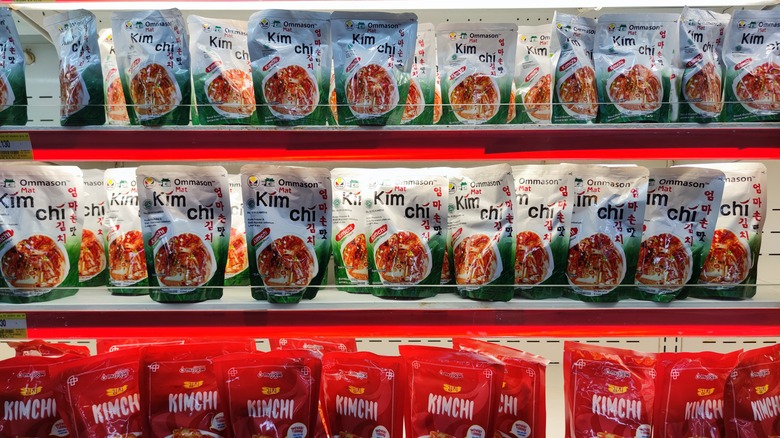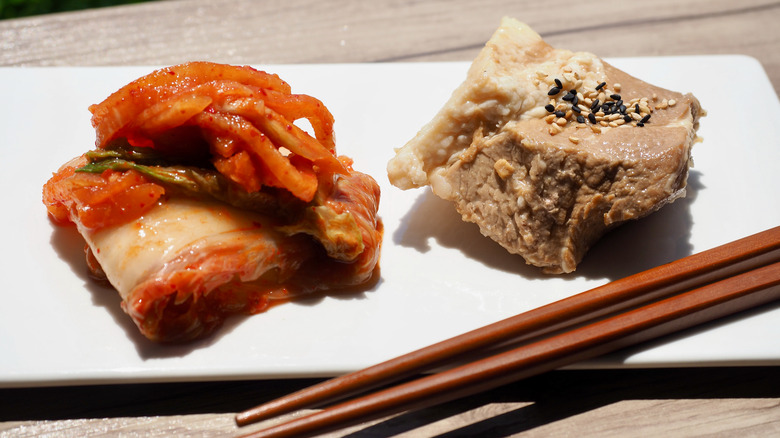One Of The Most Important Things To Pay Attention To When Buying Store-Bought Kimchi
Because of the variety of ways you can use kimchi to make meals more scrumptious, it has become handy to have a stock of this salty, umami, tangy, spicy, and crunchy dish on hand. In Korea, where it originates, kimchi-making, or kimjang, is a significant cultural tradition that is now part of UNESCO's representative list of the intangible cultural heritage of humanity. Lucky for busy people, this fermented dish is available commercially in many different options, with varying ingredients and levels of maturity and spiciness.
To find the best kimchi brand that matches your preference, check the label for when the kimchi was packed, since it indicates how long it has been fermented. Depending on how long it has been allowed to ferment, kimchi can be classified as either fresh, ripe, or overripe. The longer the fermentation period, the stronger and funkier the kimchi is, not just in taste but also in aroma and texture.
Since fresh kimchi hasn't been allowed to ferment yet and is packed on the day it's made, the natural sweetness of the vegetables used can still be tasted underneath the spiciness of the paste, and their textures and colors are still quite discernible. Meanwhile, ripe or mature kimchi has been allowed to ferment for either 12 to 18 hours (if made during warmer weather) or 24 to 48 hours (during a cooler season). It also has that sour and funky flavor kimchi is known for, and the vegetables are softer yet still have a bit of crunch to them.
Kimchi's ripeness indicates how you should consume it
There's also such a thing as overripe kimchi. This results when the fermentation period has been longer than two days, such as when you've kept a jar or pack of it in the fridge for weeks or months. Overripe kimchi has an intense red color, pungency, and flavor, and you'll also find that it has a considerable amount of juice at the bottom of the container.
You may be more familiar with serving kimchi as a banchan, or side, for Korean BBQ and other dishes, but its ripeness suggests how you should consume it for optimum flavor and texture. Ripe or mature kimchi is perfect with grilled samgyupsal, with its complex combination of umami, sourness, and spiciness serving as a great foil to fatty pork. The salad-like freshness of just-packed kimchi, on the other hand, complements bossam, a dish that features thinly sliced boiled pork wrapped in cabbage leaves.
However, kimchi that has been fermented for too long won't taste good served as it is. It's best when cooked with other ingredients where its intense flavor can be used as a seasoning and will have other components to temper it. From kimchi fried rice to kimchi sundubu jjigae, or Korean tofu stew, any dish that calls for putting kimchi on heat requires the old or overripe kind for optimum taste. That's why it's essential not only to check when your store-bought kimchi was packaged, but also to keep track of it after purchase.

